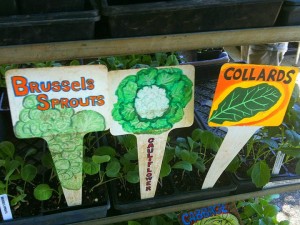
Start the year right. These garden and food resolutions are easy to implement into your life, regardless of where you live. Yet these six simple ideas will help you eat better, feel healthier and connect more closely with your community. Take a peek.
Image of Eugene (Oregon) Farmer’s Market is copyright Teresa O’Connor.
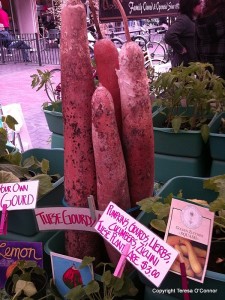
Along with delicious local foods, farmers markets are good sources for vegetable plants. Photo copyright Teresa O'Connor.
1) Eat Local: These days, food travels nearly 1,500 miles on average to reach your grocery store. Yet, there are several ways to buy delicious fresh foods directly from your local farmers, including farmer’s markets, Community Supported Agriculture (CSA) memberships and online networks such as Local Harvest and Eat Wild.
Numerous studies show a local, seasonal diet has multiple health benefits, and the food certainly tastes better. Just think of that juicy tomato bought at the farmer’s market, or picked fresh in your garden, versus the rubbery ones found in your grocery store.
Eating locally supports your regional economy too. When you buy directly from local farmers, they earn up to 90 cents on the dollar. But when you purchase that food in the grocery store, that farmer only earns about 20 cents.
Buying locally reduces the environmental impact of shipping and long-distance travel. Plus, it’s comforting to know you’re eating well while supporting your local economy and family farmers.
- Why you should show family farmers some love.
- How to start a locavore dinner group with local foods.
- What to expect from a farm-to-fork dinner featuring farm-fresh foods.
- Why local ingredients are now one of the top 2012 restaurant trends.
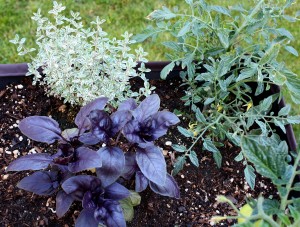
Silver variegated thyme, purple basil and 'Tom Thumb Yellow' tomato plant. Photo copyright Kevin O'Connor.
2) Grow Your Own Foods: Whether you have a small balcony or an acre garden, promise yourself to grow at least one type of food this year, even if it’s just a basil or thyme plant in a pot.
When you grow your own food, you know exactly how it was grown. And you won’t need to worry how many miles that fresh food traveled to arrive in your store. In fact, some of your homegrown veggies will be lucky to make it safely into your house, because they taste so delicious right off the vine.
- With the right varieties, you don’t need much room to grow tomatoes and herbs, as you can see here.
- Some of my favorite varieties of tomatoes, peppers and eggplants. Plus, lettuces, carrots and peas.
- Containers of all types will help gardeners with limited space grow food.
- Don’t forget to grow up with tips from Garden Up!
I’ve become a big fan of Greenbo planters this year. Small space gardeners will especially love how these nifty Greenbo planters let you grow food on city balconies, fire escapes and other challenging spots.
Even for my suburban garden, I appreciate how securely these cute containers hang on railings — regardless of whether those railings are square, straight or curved. Plus, look at all those cool colors! Greenbo’s size is ideal for herbs, but I recommend you try growing a bit of baby lettuce or arugula too.
3) Experiment with Heirlooms: Over the last century, about 75 percent of agriculture’s genetic diversity has disappeared. Yet, each of these heritage foods has a rich history and distinct taste that should be preserved. In your kitchen garden, promise yourself to grow heirloom foods as well as modern hybrids.
- Why we should treasure heirloom foods. (An article I wrote for Horticulture Magazine, which reveals the amazing stories behind many of our favorite heirlooms.)
4) Eat Flowers: Expand your culinary horizons by indulging in a food tradition that dates back to ancient times. Edible flowers can spice up meals and impress your snobbiest foodie friends, but always make sure you know what you’re eating and how it was grown. Not every flower is edible; some are poisonous.
- Learn more about how to grow, harvest and eat edible flowers safely.
- Get an elderflower fritters recipe for spring and elderberry syrup recipe for cold-season.
- Try this calendula petal orange biscuit recipe, as soon as the flowers bloom in spring.
5) Share the Harvest: Take that extra mint, rosemary, squash and lettuce, and share your harvest with people in need in your community. Your fresh food donations will benefit local food banks and community centers, and it’s comforting to know your garden is helping to feed children and adults throughout your area.
- Learn how to share garden produce with those in need, including Ample Harvest, a national network that connects home gardeners with local food banks.
6) Help Kids Garden: From reconnecting children with nature to giving kids much-needed exercise, gardening provides a number of physical, emotional and intellectual benefits. Here are five reasons why kids should garden, plus some really adorable photos of young gardeners at work.
Get Started: From supporting local farmers to growing your own groceries, these resolutions will get you off to a healthy start in 2012. Even if you just adopt one, you’ll still benefit.
Meanwhile, what are some of your New Year’s resolutions?
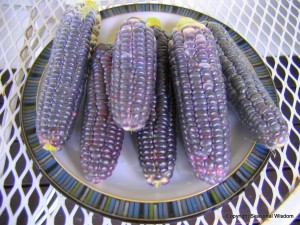
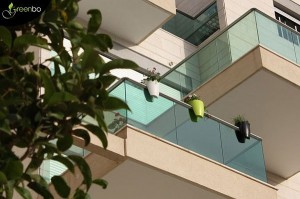
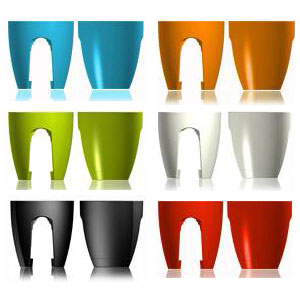
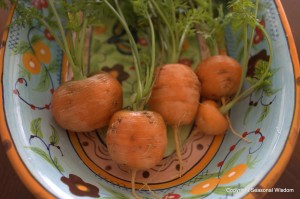
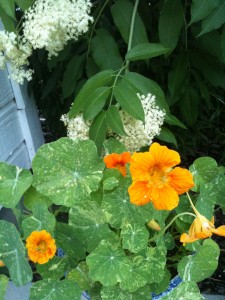
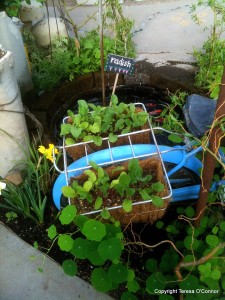
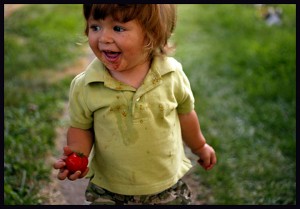










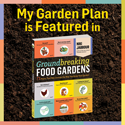
{ 12 comments }
I LOVE this! This is my mission. I want to spread this exact type of information with everyone I know or may soon meet. Thanks! I just received my seed order of various butterfly, bee and bird attracting flowers and can’t wait to plant!! Your website is wonderful.
Kelly,
Sweet! It’s nice to meet a kindred spirit. Thanks for doing your part to attract butterflies, bees and birds to your garden. We also appreciate your nice words about the website! Have fun playing in your garden this year. Best regards, Teresa
I’m excited after reading this.. I just moved to a new town, new house and ready to get in the back yard and plant a garden… I never realized about the traveling of the vegetables and buying from the local farmers….
Tracy:
Congratulations on your new home! Have a lot of fun growing a new garden too. I’m so glad to hear that this post helped you learn more about local food and family farmers. Whether it’s buying from farm stands, farmer’s markets, online services or CSA memberships, we all can do more to support these important local food providers. All the best, and thanks for stopping by, Teresa
Teresa – I shop at our Santa Barbara Farmers Market twice a week all year long. Not only is the food delicious, local & organic but I get to talk to who grows my food. At home, I have lots of fruit trees & an herb garden.
I totally agree – it’s healthy & a big part of our local economy here.
Hi Nell: Lucky you to shop at the Santa Barbara Farmers Market! I was trained as a Master Gardener in California from the U.C. Cooperative Extension and Santa Barbara Botanical Garden. It’s such a lovely place to live, with so many wonderful local foods. Enjoy! And thanks for stopping by Seasonal Wisdom. Teresa
Thank you for such an informative, well written and inspiring article. I live in Cape Town, South Africa and it’s sad to see so many people from a rural background forgetting that they can grow their own food. Here are some great ideas for implementing in my own life and garden and sharing with others!
Lisa: Thank you for such a nice message! We love hearing from other countries at Seasonal Wisdom. It is discouraging that so many have forgotten these basic food growing skills, especially those with such a long heritage of sustainable gardening. Let’s hope that situation starts to switch around soon. Hope to see you again, and thanks for stopping by! All best, Teresa
What a delightful post to find on this cold New Jersey day, thank you so much for sharing. I love your blog and how it is designed, I have a feeling I am going to be re-sharing a lot of your wisdom with my friends. Implemented so many principles of edible landscaping in my own garden last year and can’t wait to figure out a way to share this knowledge with others who can benefit, especially since Storm Sandy took her toll on our coastal community. Look forward to following you on Facebook and Twitter as well!
Liz: Thanks for visiting us from New Jersey. We really appreciated all your nice words. Good luck to all of you in coastal NJ during this recovery time. The rest of the nation is sending our best wishes! Teresa
Teresa, thanks for another great blog! I was excited to read the article on Heirloom veges, since I met just yesterday and proposed planting heirloom veges in planters at the local history museum to compliment a summer exhibit. That conversation led to more than I ever thought possible and will increase Edible Landscaping in our city!
btw – I emailed the director a link to that article. Well done!
Wendy: Thanks so much for your nice note. I’m thrilled that the article was helpful for your historic garden. For more heirlooms with interesting history, you might want to read my heirlooms article in Horticulture Magazine (look in the articles section of this blog). All the best, and hope to see you again sometime soon. Teresa
Comments on this entry are closed.
{ 2 trackbacks }